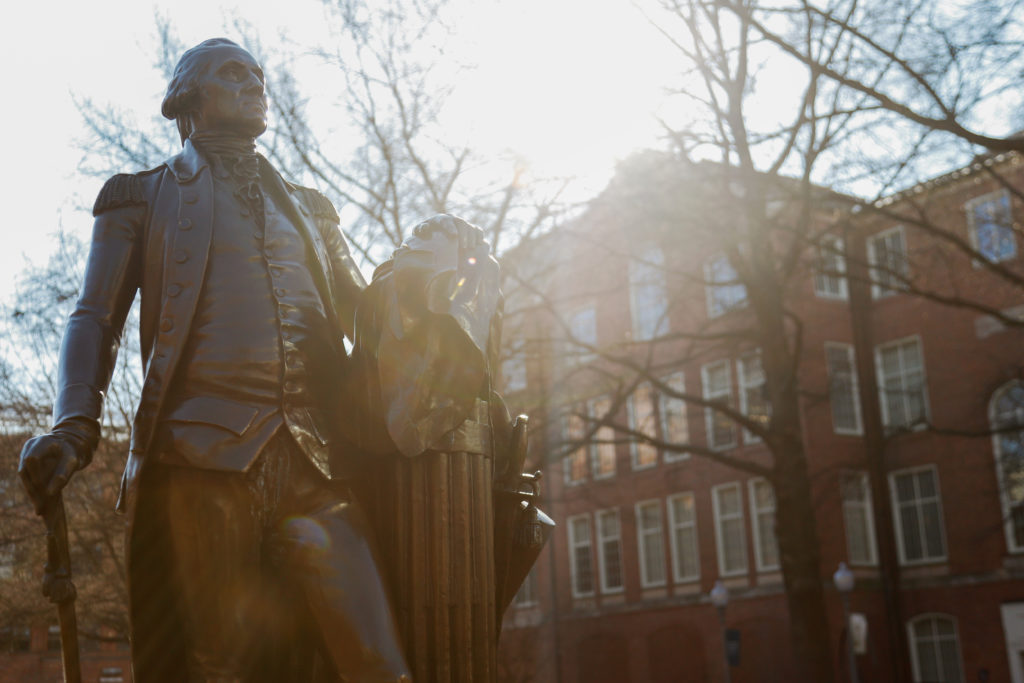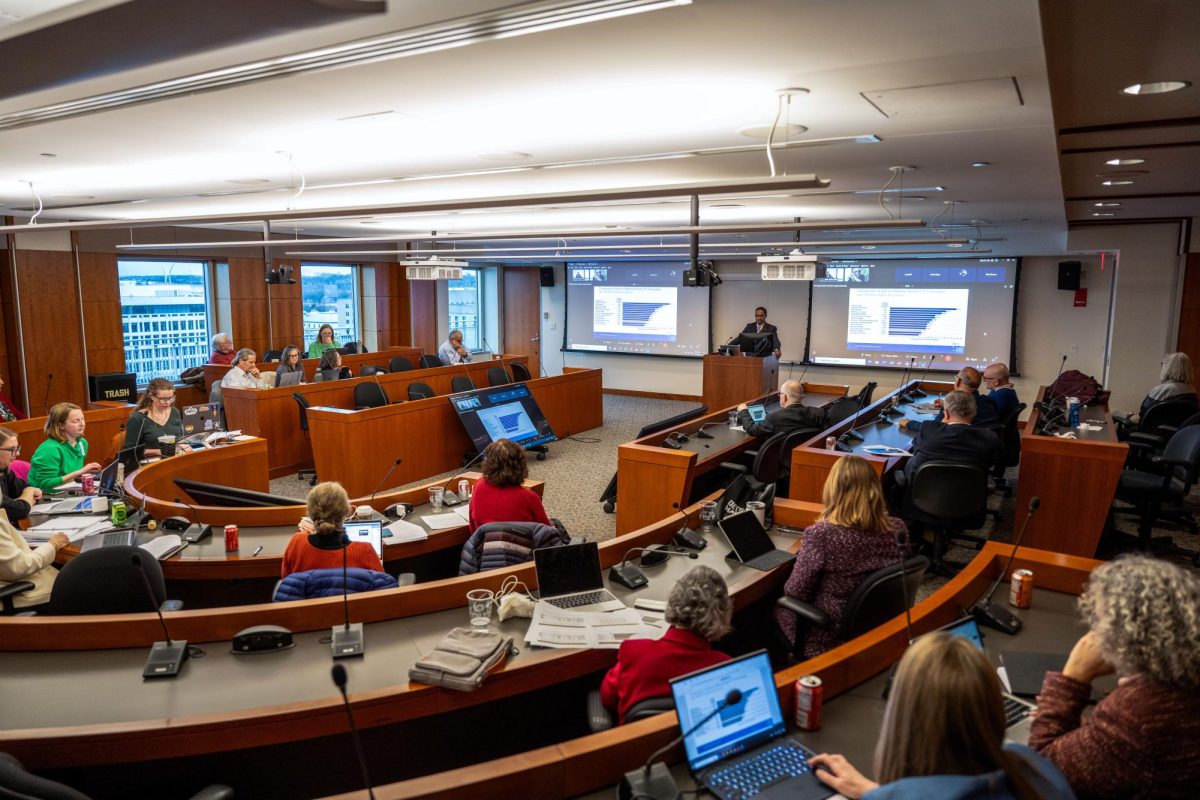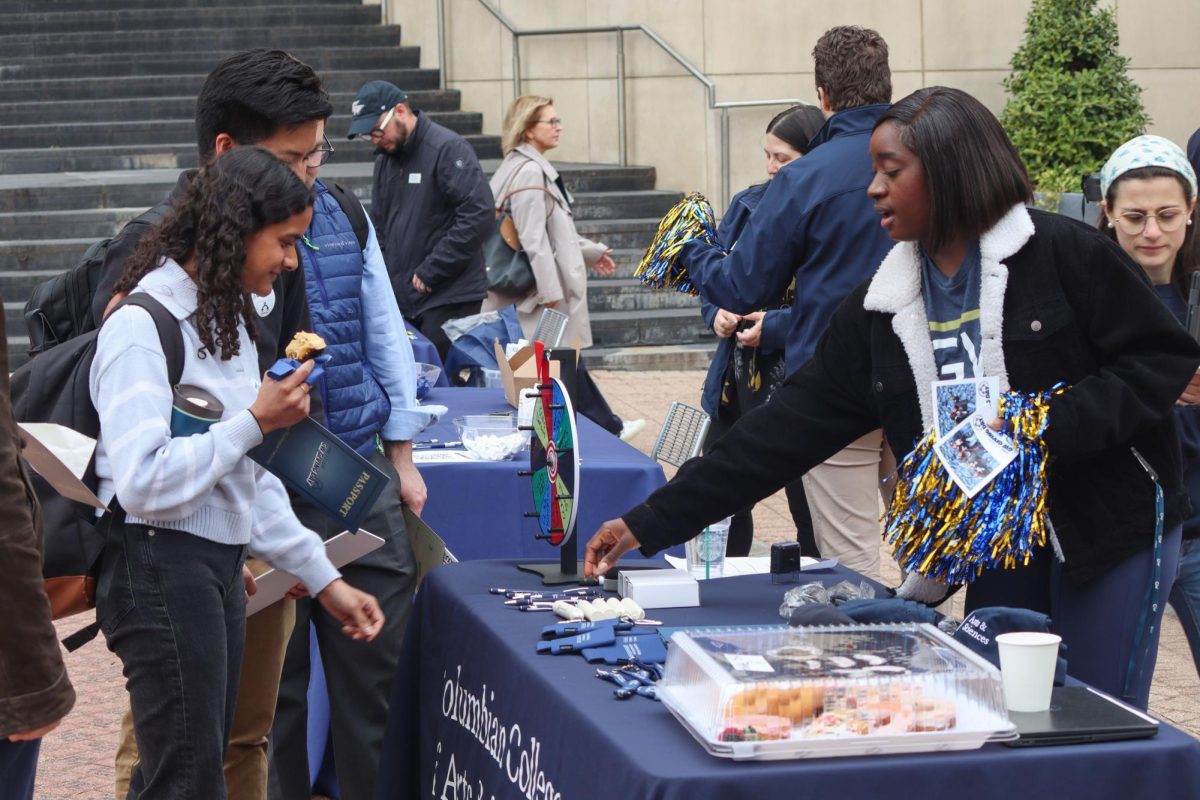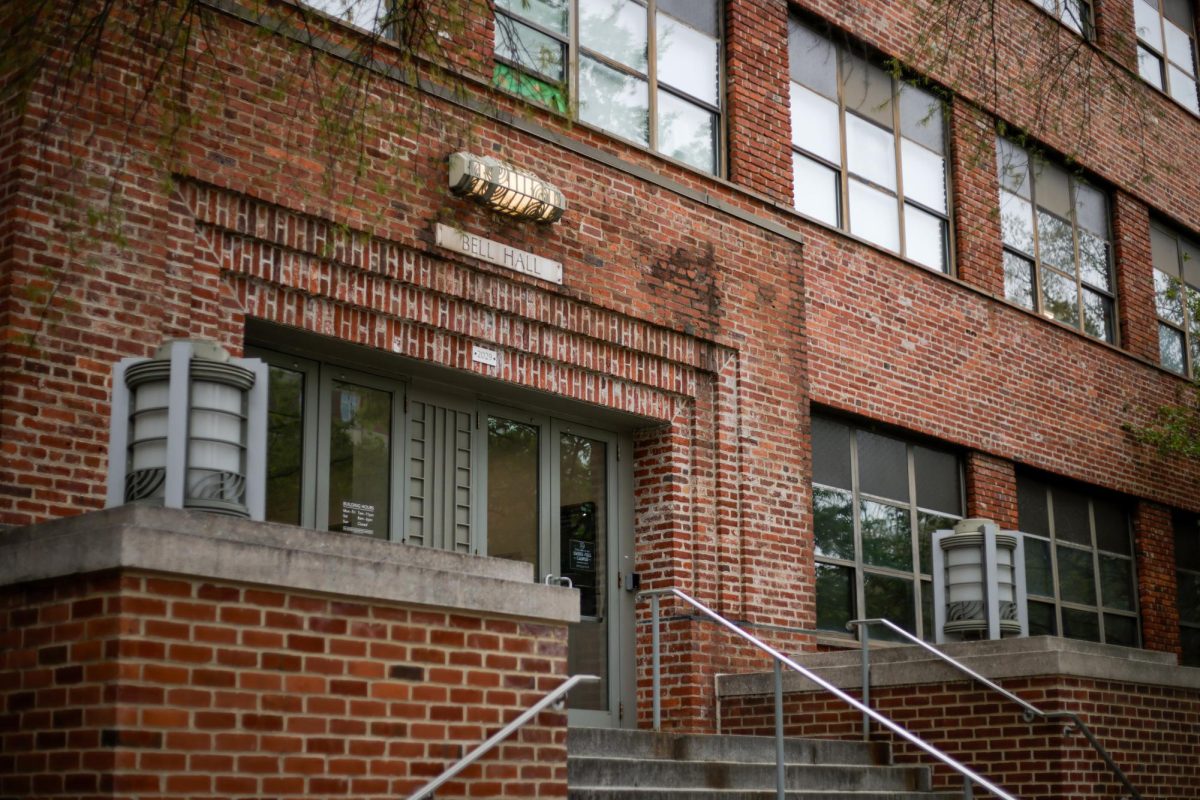The latest available demographic and enrollment data indicate that GW will fit into a nationwide college enrollment drop within the next few years largely due to the economic impact of the COVID-19 pandemic and declining birth rates, experts said.
Officials said in October that GW’s undergraduate enrollment rate decreased by 1.6 percent as total enrollment fell by 2.1 percent from 2020 to 2021, a smaller decline than an average industry-wide undergraduate enrollment drop of about 3.1 percent, according to data published by the National Student Clearinghouse Research Center last month. Higher education experts said GW’s enrollment drops mirror trends across colleges nationwide, which are receiving fewer applications and lower enrollment rates because of gradually declining birth rates and the pandemic’s economic impact.
The number of college-age students will start declining again by 2025 after birth rates dropped by about 2 percent during the 2008 recession, according to a 2020 report from the Western Interstate Commission for Higher Education.
“Nationally, the number of high school graduates is expected to peak in the mid-2020s before entering a period of modest decline through the end of the projections in 2037,” the report reads.
Jay Goff, the vice provost of student enrollment and student success, said in October that officials will prioritize international student recruitment and outreach efforts after this year’s drop in enrollment. He said domestic enrollment was “relatively stable,” decreasing by 1.3 percent.
“That will help us regain these numbers and get more actively engaged in the international community because we know that this is a very important part of our campus student body and part of our diversity efforts,” Goff said.
Experts said schools like GW will face increasing competition to recruit and enroll undergraduate students, as the number of high school graduates dips during the next decade.
Christopher Lydon, the vice president for enrollment, management and marketing at the Catholic University of America, said schools in the Northeastern and mid-Atlantic United States will likely have the most difficulty recruiting more students because the number of college-age people in the region will decrease by almost 600,000 – one of the largest regional drops. Almost 35 percent of GW students come from states in the Northeast, according to institutional data.
“You might see more of a demographic decline, say in the Northeast and mid-Atlantic, and potentially for stronger numbers, South, Southwest and West, which are natural locations for where immigrants come into the country as far as that’s concerned,” Lydon said.
Officials said in 2020 when they were planning an enrollment cut that they were aware of the downward trends in enrollment in Northeast and mid-Atlantic states and planned to expand their efforts to increase enrollment in Southwestern states to make up for the potential loss.
Lydon said the higher education industry faced a similar decrease in college-age students of almost 2 percent in the late 1980s and early 1990s at the end of a population boom. He said colleges and universities had to implement more “aggressive” marketing strategies, which included more high school recruitment visits and mail and flier campaigns to attract more undergraduate applicants and compete with other institutions.
“It’s certainly not one size fits all because there’s such diversity across higher education, but I don’t believe that too many people are in the work that we do, in the work that the chief financial officer does or in the work that a president does, who isn’t aware of how the demographics might affect them in the coming years,” he said.
Joseph Paris, an assistant professor of higher education at Temple University, said some students have reconsidered attending four-year colleges because of financial strains from the pandemic, which have lowered applications and enrollment totals.
Private four-year institutions suffered greater enrollment drops than public colleges, according to a College Board study from June. The study states that enrollment at private and public institutions fell by about 4.5 percent and 2.8 percent, respectively, from 2019 to 2020.
“COVID has presented a challenge,” Paris said. “As students who may be a traditional age – going from high school directly to college – may be thinking about other plans as viable options, whether that’s taking some time off to enter into the workforce or whether it’s taking time off to volunteer.”
Paris said GW’s enrollment decline is similar to those of other large private universities, and because GW does not receive the same amount of government aid as public institutions, officials may struggle making up for lost revenue. He said certain demographic changes, like fewer college-age people in the Northeast, are contributing to GW’s falling enrollment rates.
“There are certainly a combination of factors,” he said. “Some of it is demographic shifts, and for those who have been documenting it for a number of years, their continued projections beyond 2022 that suggest traditional age, undergraduate student enrollment will decline in many parts of the United States, predominantly the Northeast.”
Paris said officials could try to attract more part-time students or expand virtual learning programs for students who cannot live on campus and attend in-person lectures if they want to boost their enrollment numbers. He said the pandemic changed the way people are willing to learn, which has made long-term virtual learning programs easier to run.
GW currently offers several virtual learning and online degree programs, but most students pursuing degrees in person do not have the option to learn virtually unless they have isolated after testing positive for COVID-19.
“I would emphasize that any institution really think about how they can tap into those markets,” Paris said. “I actually think COVID presents a unique opportunity to do that as well, given the proliferation of online learning.”
Donald Hossler, a distinguished provost professor emeritus of educational leadership and policy studies at the University of Indiana Bloomington, said college and university officials will often receive more applications and higher enrollment rates when the economy is performing poorly or fewer jobs are available in the market because people have more time to take classes without turning down a paying job. He said as the labor market rebounds from the pandemic, fewer people will want to attend college classes if they can work instead.
“If I can go out and get a reasonably good paying job, why wouldn’t I do that as opposed to going to college and actually having to pay tuition and losing these dollars I could be making,” he said. “So I think some of that has to be going on because we have known for decades about this kind of inverse relationship.”
Hossler said GW’s enrollment rate decline is “not catastrophic at all,” but because more schools adopted test-optional models at the start of the pandemic, GW may face increased competition from students “trading up” to higher-ranked schools not requiring standardized tests.
All of GW’s 12 peer schools allowed for test-optional applications in fall 2021. Only two of them instituted those policies before the pandemic.
GW stopped requiring applicants to submit standardized test scores in 2015, while the number of test-optional four-year colleges more than tripled in spring 2020.
“GW is not a school where I would think for a moment there are any serious financial difficulties, but it may be one of those schools that is going to have to be adjusted,” Hossler said. “I’m not saying I know this is happening, but there are going to be schools that have been relatively successful in the past who are going to have to recalibrate their notion of success and what it means for revenue and what it means for their expenditures.”








